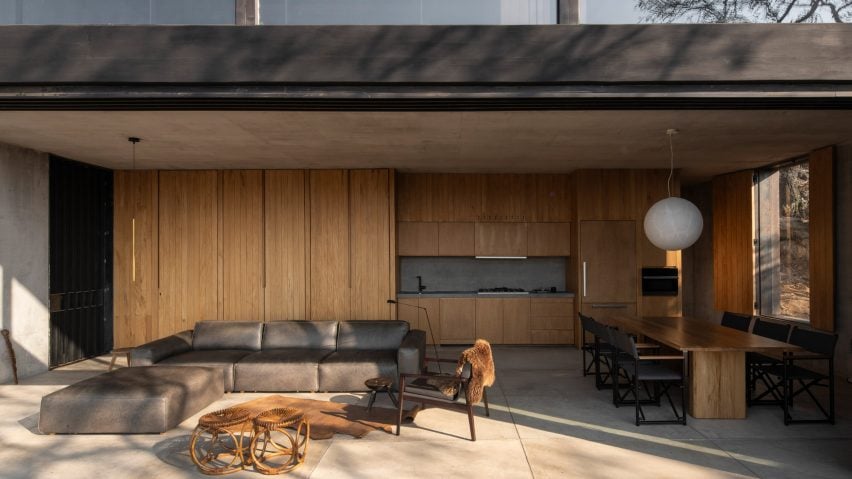
Elías Rizo reinterprets vernacular Mexican cabin in concrete
Mexican studio Elías Rizo Arquitectos has balanced a concrete house with a steep gabled roof on a hillside in Tapalpa, Mexico near Guadalajara.
Known as El Mirador, the 2023 house measures 230 square metres (2475 square feet) and serves as an "ode" to the site's preexisting landscape.
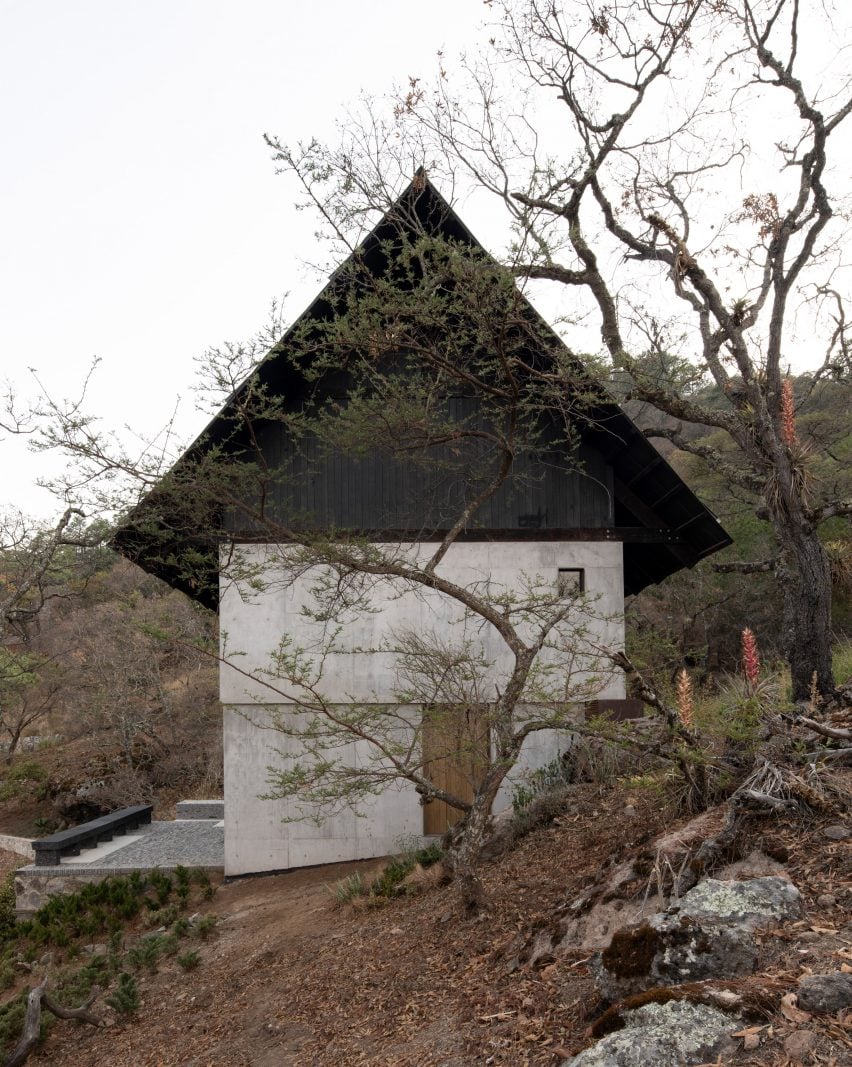
"We wanted to design a house that became one with the landscape over time and allow time to erase the line between nature and architecture," Elías Rizo told Dezeen.
The house was placed on the most accessible point of a sloped terrain near a pool fed by mountain runoff. It is oriented towards a valley and the Colmia volcano.
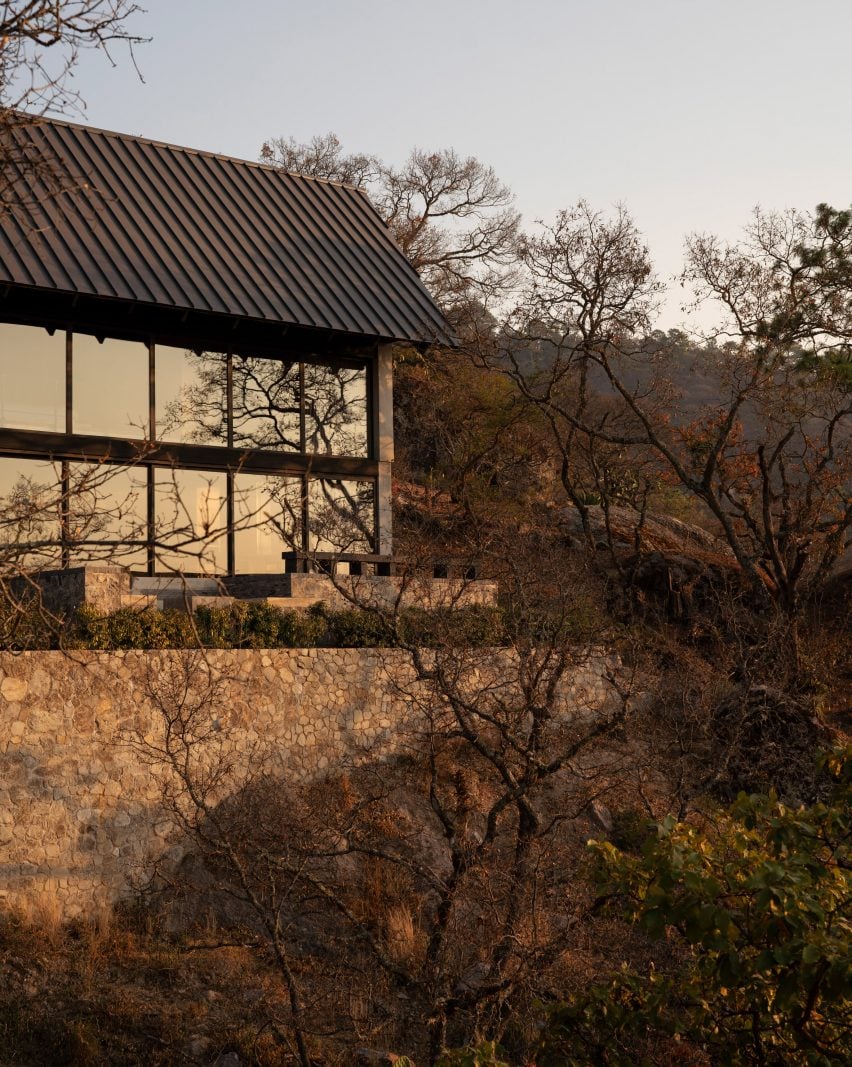
With a rectangular form, the home is composed of smooth concrete with a small overlap that creates a datum line between the two storeys.
Under the angle of the standing seam metal roof, which stretches outward along the ridgeline to form an oblong diamond in plan, the concrete transitions to black wood.
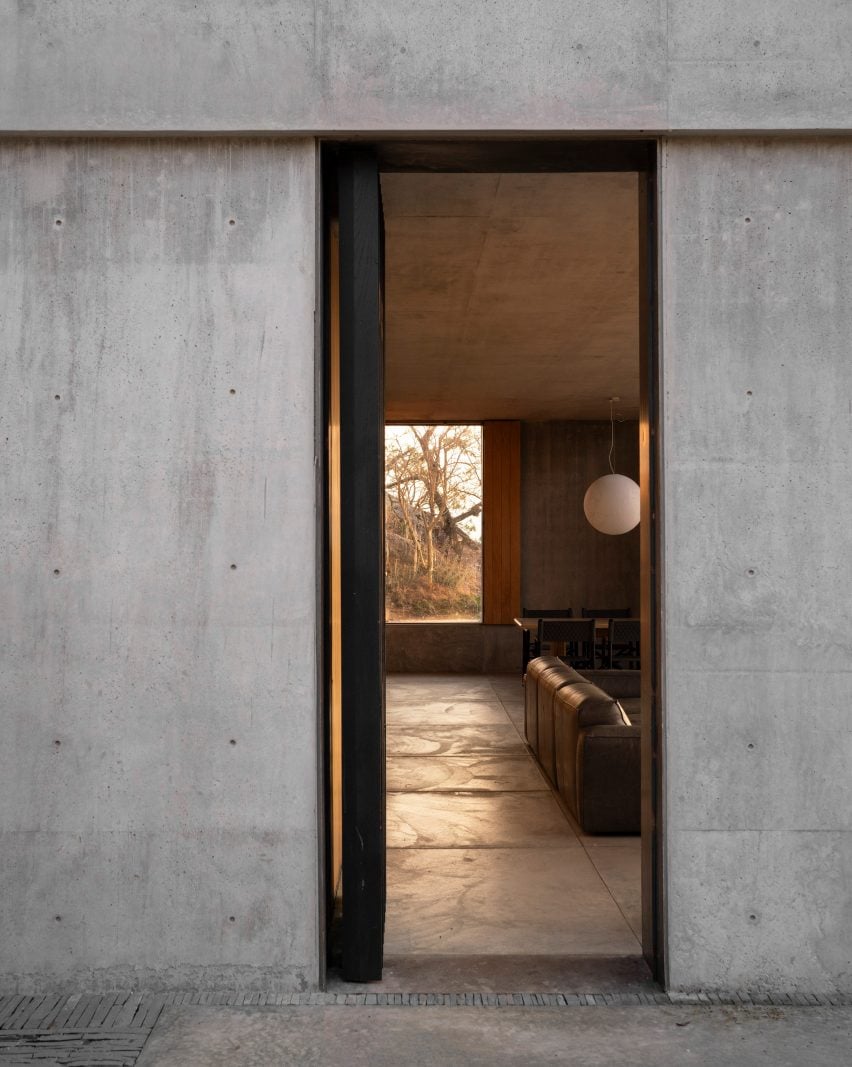
"Gabled roofs are used all over the region's vernacular architecture – we only changed its inclination and materials to lower the roof's maintenance because of the difficult accessibility of the site," the team said.
The window frames are made of weathering steel, which will oxidize and stain the exterior walls with an ochre patina – much like the colours of the house's surrounding stone.
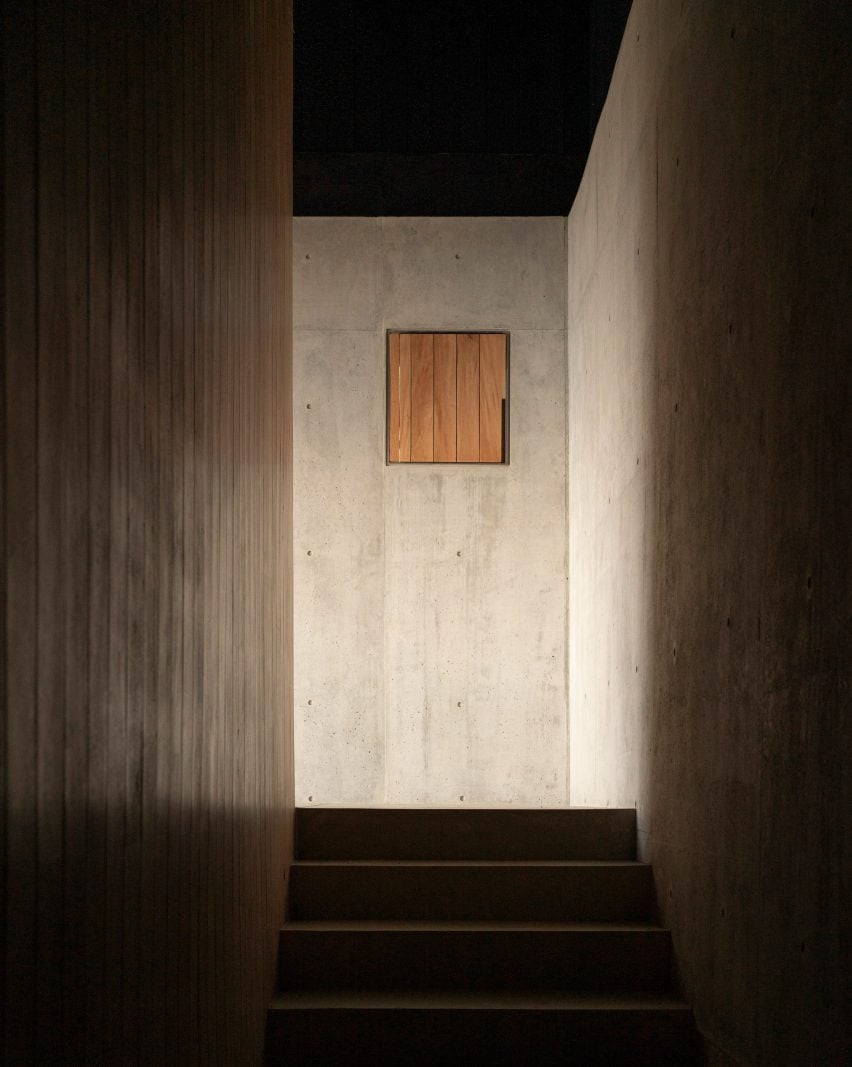
The long front side of the house is entirely glass, with a series of sliding doors on the ground level. Meanwhile, each of the short sides is punctured by a single door and a small square window on the upper level. The back of the house is solid concrete.
Two terrace spaces – a flat entry platform and a front patio that steps down into a series of benches – are composed of stone slates that were found on site.
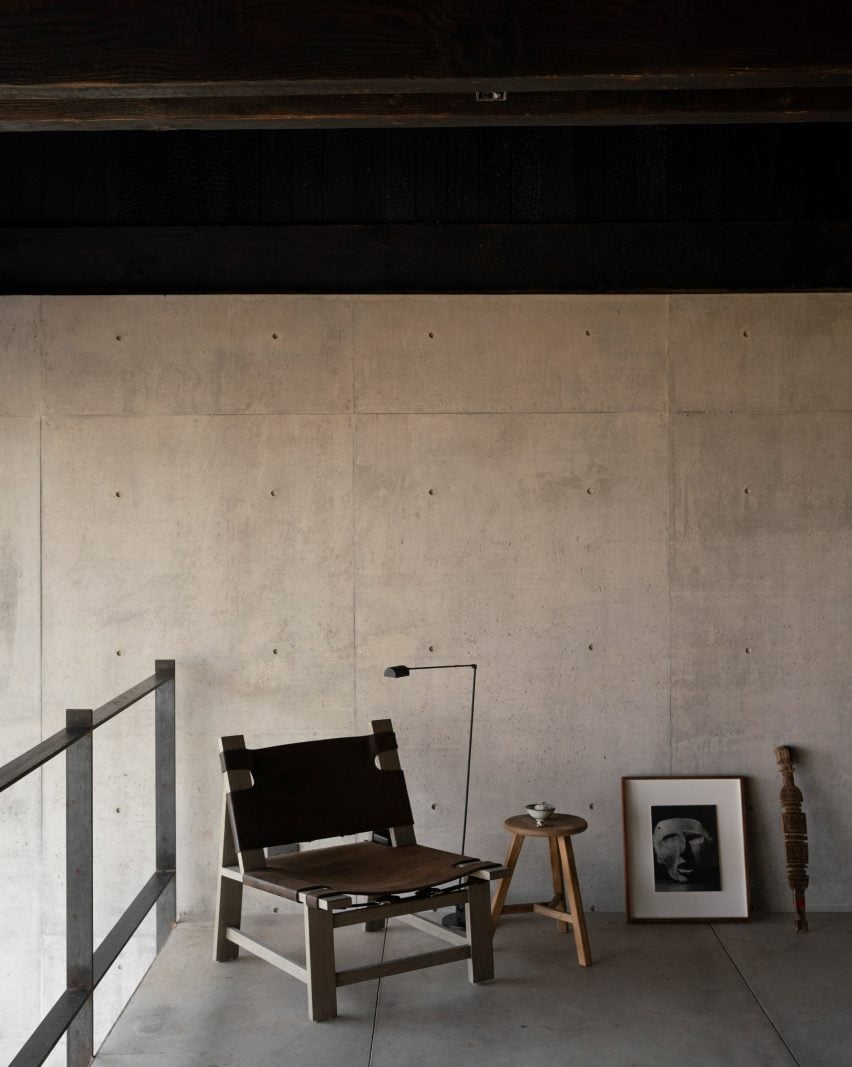
On the interior, a module made of solid Rosa Morada wood begins on the ground floor and extends up, housing all the serving spaces on the ground floor and all of the bedrooms on the top floor.
It divides the living spaces from the darkened staircase, which runs along the back of the plan as a "mysterious threshold inside the house".
Upstairs, a moveable wooden box houses the shower and can be opened on three sides to coexist with the bedroom and views of the landscape or can be closed off for privacy.
"The project is a daring reinterpretation of the region's architecture," The team said. "We used many of its elements but we transformed them into a different language."
"Our project could be understood as a reinterpretation of the Mexican vernacular woods cabin or as its antithesis and we are aware and happy with this duality."
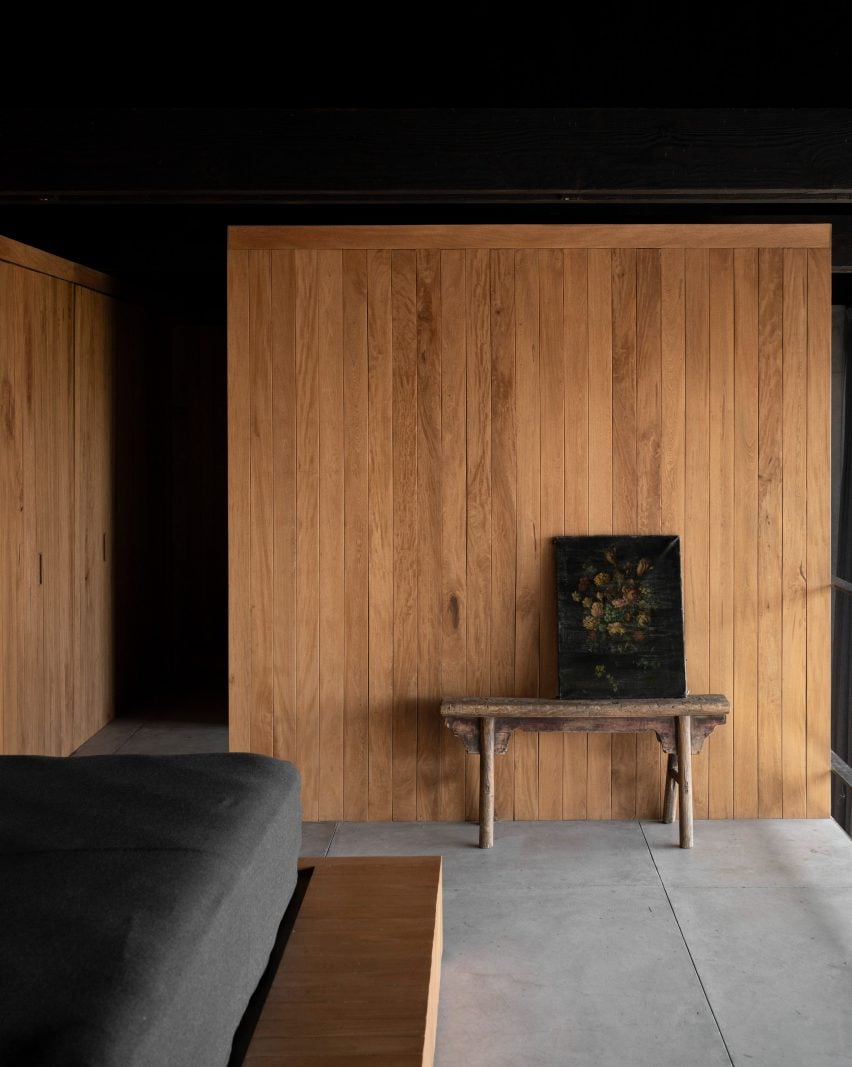
Other concrete houses recently designed near Guadalajara include a pared-back forest retreat by René Pérez Gómez and an inward-focused house with a steel framework by Arqueodigma Studio.
The photography is by Fabian Martinez.